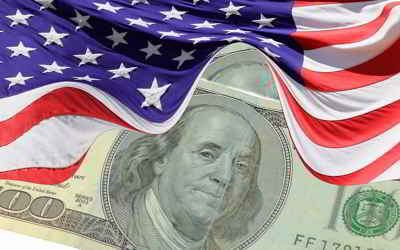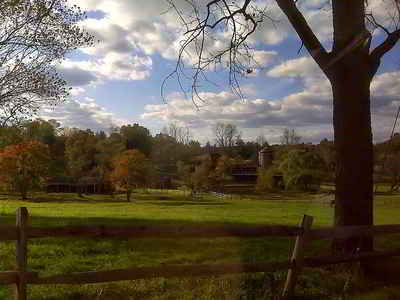Maryland Economy
Agriculture and Industry in Maryland
Maryland economy is a set of human and social activities and institutions related to the production, distribution, exchange and consumption of agriculture and industry goods and services. The balance between Maryland various economic sectors differs largely between various regions and other states in the US.Maryland Agriculture and Industry
Maryland's real gross state product in 2012 was estimated to be $274,930 which was $87,490 and 47% higher than the national state average, $187,440. Maryland has the 15th highest GSP out of the 50 states.
The Atlantic coastal waters and Chesapeake Bay provide Maryland with a busy fishing industry. The state's annual catch of crabs is the largest in the United States. Aquaculture, or fish farming, is important to Maryland's economy. Aquafarms within the state produce striped bass, catfish, tilapia, and shellfish as well as ornamental fish and aquatic plants.
Manufacturing provides a major income for the state. Maryland's products include electrical and electronic machinery, food, and transportation equipment. Tourism, printing and publishing, and biotechnology are also important industries.
The federal government in neighboring Washington, DC employs many Marylanders. Service industries, insurance, and real estate also provide many jobs within the state.
Agriculture still plays a significant role in Maryland's economy. The state produces livestock (especially chickens) dairy products, greenhouse items, corn, hay, tobacco, and soybeans.
Maryland Agriculture:
Seafood, poultry and eggs, dairy products, nursery stock, cattle, soybeans, corn.
Maryland Industry:
Electric equipment, food processing, chemical products, printing and publishing, transportation equipment, machinery, primary metals, coal, tourism.
The Bureau of Economic Analysis estimates that Maryland's total state product in 2003 was $212 billion. Per capita personal income in 2003 was $37,446,
5th in the nation.
Maryland's economic activity is strongly concentrated in the tertiary service sector, and this sector, in turn, is strongly influenced by location.
One major service activity is transportation, centered around the Port of Baltimore and its related rail and trucking access. The port ranked 10th
in the USA by tonnage in 2002 (Source: US Corps of Engineers, "Waterborn Commerce Statistics"). Although the port handles a wide variety of products,
the most typical imports are raw materials and bulk commodities, such as iron ore, petroleum, sugar, and fertilizers, often distributed to the relatively
close manufacturing centers of the inland Midwest via good overland transportation.
A second service activity takes advantage of the close location of the center of government in Washington, D.C. and emphasizes technical and administrative
tasks for the defense/aerospace industry and bio-research laboratories, as well as staffing of satellite government headquarters in the suburban or
exurban Baltimore/Washington area. In addition to these are many educational and medical research institutions. In fact, the various components of
Johns Hopkins University and its medical research facilities are now the largest single employer in the Baltimore area. Altogether, white collar technical
and administrative workers comprise 25% of Maryland's labor force, one of the highest state percentages in the country. A list of government agencies
located in Maryland is summarized below:
Federal Agencies
Census Bureau
Centers for Medicare and Medicaid Services (CMS)
Consumer Product Safety Commission (CPSC)
Environmental Protection Agency (EPA)
Food and Drug Administration (FDA)
Internal Revenue Service (IRS)
National Archives and Records Administration (NARA)
National Aeronautics and Space Administration (NASA), Goddard Space Flight Center
National Geospatial-Intelligence Agency (NGA), formerly the National Imagery and Mapping Agency (NIMA)
National Institute of Standards and Technology (NIST)
National Institutes of Health (NIH)
National Oceanic and Atmospheric Administration (NOAA)
Nuclear Regulatory Commission (NRC)
National Security Agency (NSA)
Smithsonian Environmental Research Center (SERC)
Social Security Administration (SSA)
Substance Abuse and Mental Health Services Administration
Consumer Product Safety Commission
Maryland has a large food producing sector. One component is commercial fishing, centered in Chesapeake Bay, but also including activity off the short
Atlantic seacoast. The largest catches by species are the blue crab, oysters, striped bass, and menhaden. The Bay also has uncounted millions of overwintering
waterfowl in its many wildlife refuges. While not, strictly speaking, a commercial food resource, the waterfowl support a tourism sector of sportsmen.
Maryland has a large amount of fertile agricultural land in its coastal and Piedmont zones, although this land use is being encroached upon by urbanization.
Agriculture is oriented to dairying for nearby large city milksheads plus specialty perishable horticulture crops, such as cucumbers, watermelons,
sweet corn, tomatoes, muskmelons, squash, and peas (Source:USDA Crop Profiles). In addition, the southern counties of the western shoreline of Chesapeake
Bay support a tobacco cash crop zone, which has existed since early Colonial times. There is also a large chicken-farming sector in the state.
The third component of the food producing sector is Maryland's food processing plants, which are the most significant type of manufacturing by value
in the state.
Manufacturing, while large in dollar value, is highly diversified with no sub-sector contributing over 20% of the total. Typical forms of manufacturing
include electronics, computer equipment, and chemicals. The once mighty primary metals sub-sector, which at one time included what was then the largest
steel factory in the world at Sparrows Point, still exists, but is pressed with foreign competition, bankruptcies, and company mergers.
Mining other than construction materials is virtually limited to coal, located in the mountainous western part of the state. In construction mention
should be made of the brownstone quarries in the east, which gave Baltimore and Washington much of their characteristic architecture in the mid-1800s.
Historically, there used to be small gold mining operations in Maryland, some surprisingly near Washington, but these no longer exist.

US economy is relies on private decision-making ("economic freedom")




